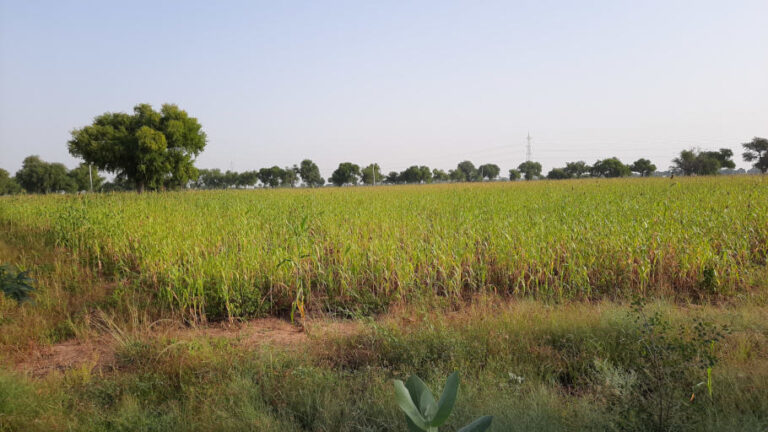Agriculture and Animal Husbandry
Lower yield means that the community will not be able to store grains and fodder to safeguard themselves against frequent drought-years. To top it all, the introduction of modern practices of cultivation have not solved problems for the local people, it has instead added new obstacles to their work and lives. Commercial seeds, chemical fertilizers, complex irrigation techniques which promised to boost yield and profits didn’t work as procuring these items became difficult and costly for marginal farmers and dependence on outsider support for their work made the concept largely impractical.
In response to this growing crisis, GRAVIS decided to revive the traditional methods of sustainable agriculture in the Thar to achieve food security as many farmers forsake some of the most efficient ancestral farming practices. We are also actively involved in research and development of innovations in sustainable dry-land agriculture and work closely with many research and extension institutions to disseminate the most relevant, efficient and sustainable farming techniques to the local farmers. Animal husbandry as well as trees and grasses intercropped with vegetables or fruit trees is considerably the most viable farming model for arid and drought-prone regions.
GRAVIS mitigates the effects of drought on agriculture and enhances the food security of the Thar by using a comprehensive approach that combines local knowledge with scientific understanding. GRAVIS has many strategies to combat food insecurity and malnutrition. Following are our key strategic interventions:
Construction of Khadin and Spillways

Khadins had been developed a few hundred years ago by the local farmers of Jaisalmer. Originally these structures are made on a cluster basis by communities and agencies. We made significant innovations and updated these by making them smaller in size such that the structure can be shared by a small group of farmers. We also motivate the construction of spillways to give a path to excess water for the next field as per the need. Necessary trainings are organized for the farming community on Khadin usages and benefits.


Community Seed Banks (CSBs)


Demonstration Plots

Horticulture Units


Animal Husbandry

Community Fodder Banks
Pasture Land Development
We develop community pasture land to combat land degradation and soil erosion by educating the community about best practices and benefits of pasture land cultivation. These pasture lands and forests are developed on community land with the help of contribution from them and are aimed to support livestock-based livelihood by means of increasing fodder security. Other related activities include provision and distribution of bulls and milch cows.

Training of Para Vets
Various soil-moisture interventions led by GRAVIS have enhanced fodder production in these areas. These coupled with capacity building programmes for the community cadre have been instrumental in securing fodder requirements of the livestock. We train selected men and women to treat animals or refer them to a clinic. This ensures that animals have a better chance of survival as the local people have much needed knowledge to treat them.
Strengthening and training of Self-Help Groups (SHGs)
Women occupy a central role in livestock management and allied activities in the Thar. Training SHGs on various aspects including fodder production, nutritive value of fodder, types of breeds, importance of indigenous breeds, breed improvement have contributed phenomenally to ensuring fodder security and nutrition requirements of animal population.


